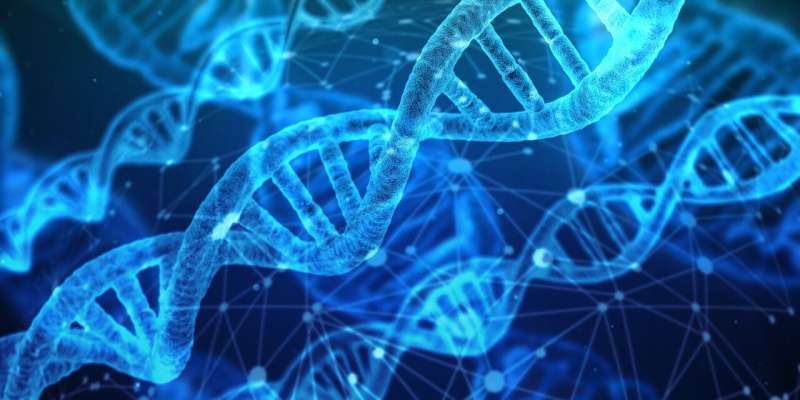
In 2020, an estimated 10 million people lost their lives to cancer. This devastating disease is underpinned by changes to our DNA—the instruction manual for all our cells.
It has been 20 years since scientists first unveiled the sequence of the human genome. This momentous achievement was followed by major technological advances that allow us to today read the layers of information of our DNA in enormous detail—from the first changes to DNA that occur as a cell becomes cancerous to the complex microenvironments of advanced tumors.
Now, to accelerate discoveries for cancer patients, we need new ways to bring together the different types of complex data we generate to provide new biological insights into cancer evolution.
For today’s issue of Science, my colleagues Professor Toshikazu Ushijima, Chief, Epigenomics Division, National Cancer Center Research Institute (Japan), Prof Patrick Tan, Executive Director, Genome Institute of Singapore and I were invited to review the cancer insights we can currently obtain from analyzing DNA in its full complexity and define the future challenges we need to tackle to yield the next step-changes for patients.
The complexity of our DNA
Many imagine our DNA—our genome—as simply a string of letters. In reality, many layers of information—known as the epigenome—completely change its activity.
Our genome can be compared to the different geographical environments of our planet. Much like mountains, islands and oceans are made up of the same basic elements, our genetic sequence of As, Ts, Gs and Cs, forms the basis of complex structural features within our cells.
These geographical environments are created by our epigenome—additional layers of information, which include chemical markers that attach to our DNA (called DNA methylation) and chemical changes to proteins (histones) that wrap around it, which together orchestrate how DNA is organized in three dimensions inside our cells.
Both our genome and epigenome evolve during the cancer life cycle, and we need to understand these complex changes to improve cancer risk assessment and accelerate therapeutic discoveries for patients.
From cancer formation to metastasis
It was previously thought that genetic changes were sufficient to cause a cancer, but it is becoming clear that both the genome and the epigenome changes together play a significant role in cancer evolution. There is some evidence that, for instance, changes to DNA methylation that occur with aging may predispose cells to genetic changes that cause cancer.
And take cigarette smoking, where scientists have observed DNA methylation changes in the cells lining the lung well before genetic changes and a lung cancer could be detected. To gain new insights into what drives carcinogenesis, we need to map the precise order of genomic and epigenomic changes.
We are also becoming aware that whilst a cancer can accumulate genetic changes, the epigenome is also ‘reprogrammed’ as the cancer transitions from a primary to a metastasising tumor, and eventually may develop resistance to treatment. Understanding these changes may lead to new therapeutic targets that can more precisely treat advanced cancers.
New insight through advanced technologies
Cancer cells reside in a tumor ecosystem with other diverse cell types, including immune cells, and connective cells, called stromal cells. Today, advanced imaging and single-cell technologies are helping us map these cells, as well as genomic and epigenomic changes, in the three-dimensional context of a tumor, and at unprecedented resolution. At Garvan, our researchers are conducting these studies at our intravital microscopy facilities and the Garvan-Weizmann Centre for Cellular Genomics.
A number of international research consortia, including the Human Tumor Atlas Network and the Cancer Research UK Grand Challenge project have been established to study cancers at the single-cell and spatial level. However, these consortia will have to tackle enormous challenges in data integration. In today’s global research environment, we need globally standardized methods to integrate data from different analysis techniques and laboratories.
By revealing not just associations, but the full integration of DNA and cellular changes that occur during cancer formation and progression, we will understand how cancer can be better diagnosed, treated and prevented.
Big data—opportunities and challenges
The last 20 years has seen us develop the technology to show that our genome and epigenome are far more complex than we appreciated. We’re at a point where new cancer insights will come from solving mathematical problems generated from complex and diverse sequencing and imagining data sets.
Our advanced technologies are allowing us to generate a wealth of data. But the challenge now is data integration—humans simply cannot digest all the information we generate. This challenge will be addressed by artificial intelligence, which is where we will need to incorporate computational expertise, looking at and modeling data in innovative ways.
Another critical future challenge will be to translate basic findings into tangible clinical applications. A precise understanding of the multiple steps that lead to cancer formation inside cells may allow us to improve our screening of cancer risk and early detection of cancer. In the future, studies of genetic and epigenetic signatures may help us remove carcinogenic agents and processes from our environment altogether.
For advanced cancers, integrated DNA analyses may help pinpoint overlooked mechanisms that cancer cells use to metastasise, which may be promising targets for therapy development.
As geneticists and epigeneticists, the challenge of integrating our data to study cancer is not unlike the challenge of modeling climate change. Climate modeling requires a huge amount of data from different sources to be combined and contextualized to make predictions about the planet’s future.
Source: Read Full Article
